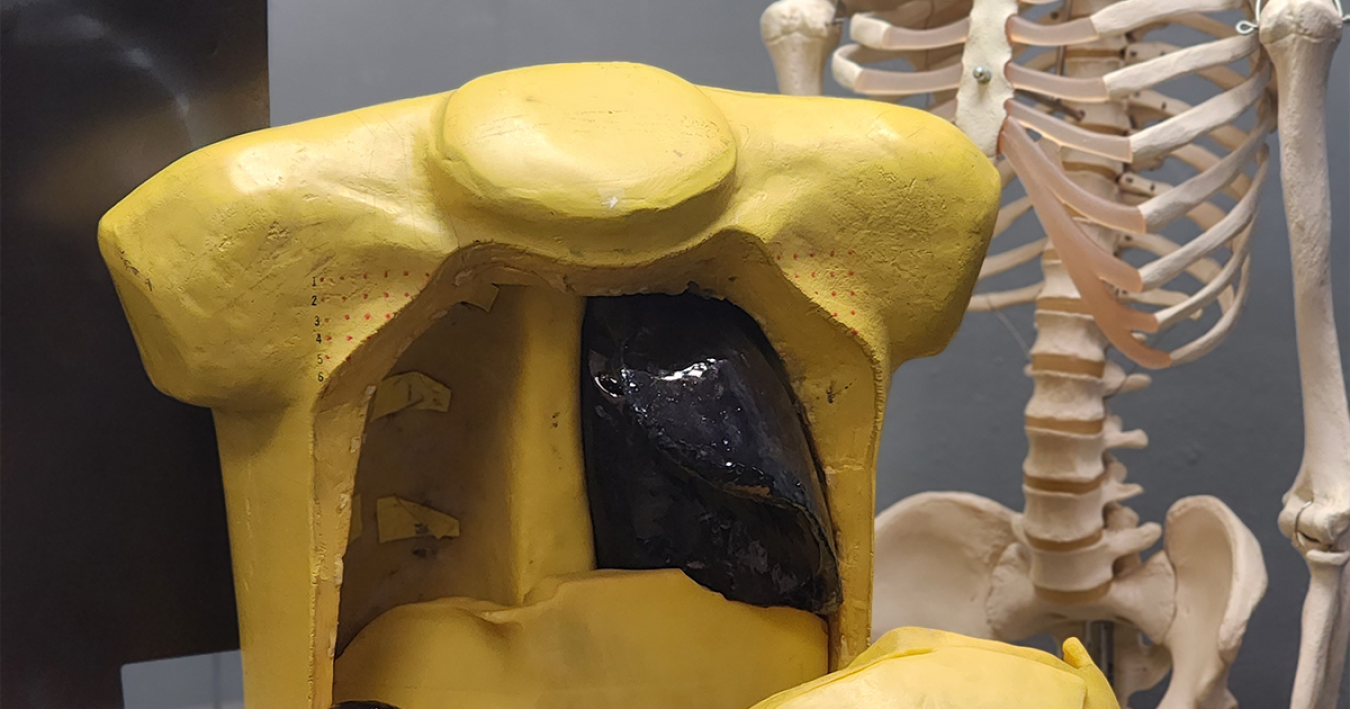 The US Department of Energy’s Radiological & Environmental Science Laboratory (RESL) has produced the world’s first lung phantom that contains the entire thorium-232 decay series. The lung phantom will be used to calibrate and test radiation detection systems used by DOE and other federal government agencies.
The US Department of Energy’s Radiological & Environmental Science Laboratory (RESL) has produced the world’s first lung phantom that contains the entire thorium-232 decay series. The lung phantom will be used to calibrate and test radiation detection systems used by DOE and other federal government agencies.
Phantoms are replicas of human organs that interact with x-rays and gamma rays the same way real organs react in people. They are made by pouring a mixture of polyurethane and calcium carbonate into silicone rubber moulds, based on plaster casts of a cadaver’s organs.
It takes around 50 years for Thorium-232 to break down or decay into a series of other elements before it can reach equilibrium or when the radioactivity of all these elements remains constant. Having the decay series in equilibrium allows researchers to know exactly how much thorium-232 is in the body or lungs without measuring it directly. US Lawrence Livermore National Laboratory previously had the only thorium-232 lung phantom in the world, but it was not in equilibrium.
Thorium-232 emits alpha radiation that is not easily detectible because it is absorbed by body tissue. The other elements in the decay series emit gamma radiation, which can be detected and used to inform calculations of the amount of thorium-232 in the body.
RESL incorporated the entire Thorium-232 decay series into its lung phantom by using 60-year-old thorium oxide material stored at Idaho National Laboratory before verifying the results. The process took less than a year and is currently the only one in the world to achieve equilibrium.
"Thorium is three times more abundant than uranium in the Earth’s crust and can also be used as nuclear fuel,” said RESL Director Guy Backstrom. “As the clean energy revolution takes place across America, the responsible development of all energy resources will help ensure our continued leadership in clean energy.” RESL’s work ensures that the measurements made to monitor the workers that are developing these energy systems remain safe.
Image: Lawrence Livermore Torso Phantom with lung and liver inserts (courtesy of LLNL)



